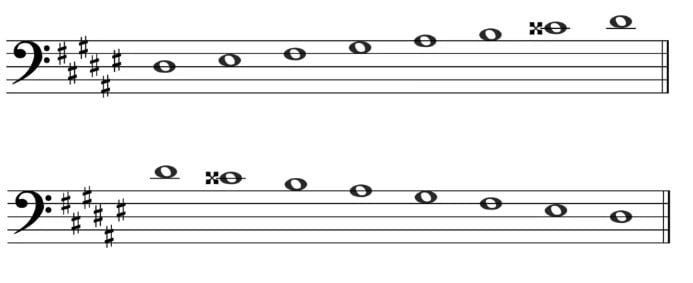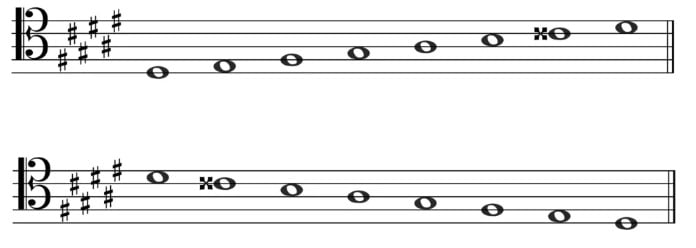D Sharp Harmonic Minor scale
The D sharp Harmonic Minor scale is a diatonic scale that starts and ends on D sharp. It is a unique and versatile scale that can be used in a wide variety of musical contexts. In this article, we will explore the D sharp Harmonic Minor scale, its construction, and its use in music.
Construction of the D Sharp Harmonic Minor Scale
The D sharp Harmonic Minor scale is constructed by raising the seventh note of the D sharp Natural Minor scale by a half step. The resulting scale has the following notes:
D# - E# - F# - G# - A# - B - Cx - D#
As you can see, the seventh note of the scale (C#) has been raised to Cx (double sharp). This gives the scale its unique sound and character.
Harmonic Minor Scale Formula
The harmonic minor scale is created by using a specific arrangement of intervals between each note. This arrangement is made up of combinations of whole steps and half steps, and can be abbreviated as W - H W - W - H - WH - H.

In British terminology, the intervals of the natural minor scale can be expressed as a combination of tones and semitones. This combination can be abbreviated as T - S - T - T - S - T - S - S.
D Sharp Harmonic Minor Modes
The Aeolian mode, also known as the natural minor scale, can be transformed into the harmonic minor scale by raising the seventh note. This is denoted as Aeolian #7. One of the advantages of understanding modes is that they are all interconnected. For example, A Aeolian and B Locrian have the same notes, except that B Locrian starts on a B. Similarly, C Ionian has the same notes as A Aeolian, but it starts and ends on C. If you're unfamiliar with modes, we recommend checking out our guide for more information. By using this approach, we can create modes for D# Harmonic Minor. The names and notes of these modes are listed below.

Play D# Harmonic Minor On Piano
To play the D# harmonic minor scale with your right hand, you can refer to the diagram provided below.

Here is the diagram for the left hand.

Play D# Harmonic Minor On Guitar
The guitar offers various positions to play the harmonic minor scale. The standard position for the D# harmonic minor scale is shown below. This shape can be shifted up and down the guitar neck to play different harmonic minor scales.

The Key Signature of D# Harmonic Minor
When playing the harmonic minor scale, it is typically used in minor key pieces. Therefore, if we are playing the D# Harmonic Minor scale, our piece will be in the key of D# (natural) Minor. Since D# minor is the relative minor of F# major, it has a key signature of six sharps.
D Sharp Natural Minor Scale In Different Clefs
Below is the D sharp Harmonic Minor Scale written in different clefs, including both ascending and descending.
Treble Clef

Bass Clef

Alto Clef

Tenor Clef








